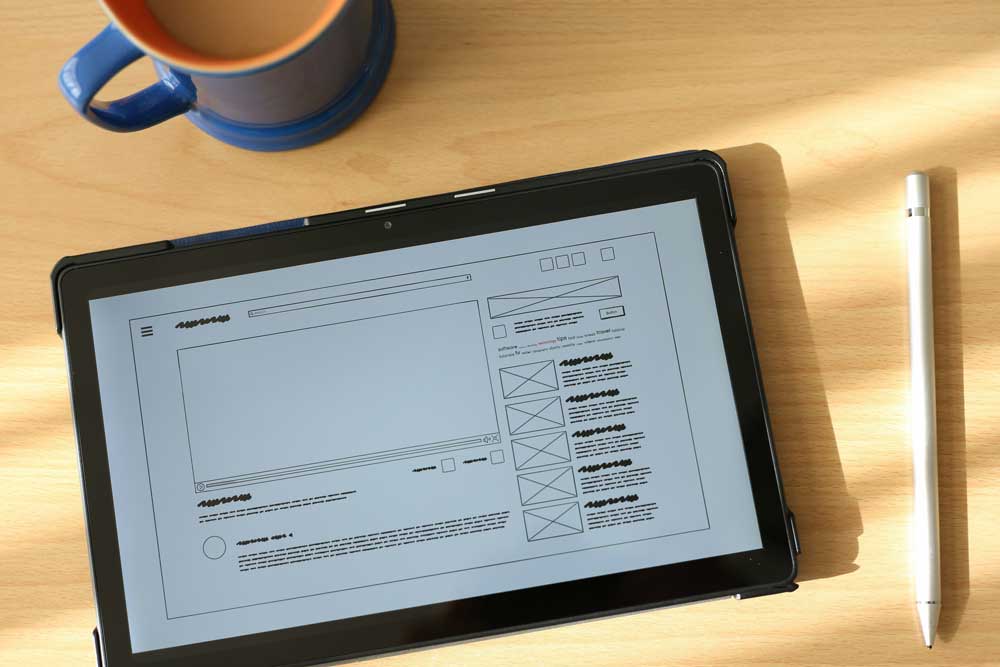In design and development, where ideas take flight and innovations come to life, the journey often begins with the delicate art of prototyping. Design and development agencies, equipped with an arsenal of tools such as whiteboarding, wireframing, and Figma, are pioneering the way forward. In this exploration, we unravel the transformative power of prototyping and the creation of Minimum Viable Products (MVPs)—a strategic dance of creativity and functionality that turns concepts into tangible digital assets.
The Power of Prototyping in the Digital Landscape
Whiteboarding a Canvas for Creativity
Whiteboarding serves as the blank canvas where ideas are born, concepts are visualised, and the collaborative spirit thrives. Design and development agencies leverage white boarding sessions to brainstorm, sketch, and outline the initial concepts of a project. This unstructured yet essential phase sets the stage for the structured journey ahead.
Wireframing Sketching the Blueprint
Wireframing is the architectural blueprint of the digital realm. Design and development agencies use wireframes to outline the structure, layout, and flow of a digital product. This skeletal representation acts as a visual guide, mapping out the user interface and key functionalities. It serves as the first tangible glimpse of the envisioned project.
Figma a ollaborative Design Excellence:
Figma, a cloud-based design tool, emerges as a beacon of collaborative design excellence. Design and development agencies embrace Figma for its real-time collaboration features, allowing teams to work seamlessly, regardless of geographical constraints. Figma facilitates the transition from wireframes to high-fidelity designs, bringing intricate details to the forefront.
Strategic Prototyping: Navigating the Path to MVP
Understanding Minimum Viable Product (MVP)
At the heart of strategic prototyping lies the concept of the Minimum Viable Product (MVP). An MVP is the distilled essence of a digital product—the core features that bring value to users. Design and development agencies guide clients through the process of identifying these essential features, ensuring that the initial release meets user needs while allowing for iterative enhancements.
Prototyping for MVP Success
Prototyping becomes the compass guiding the development of an MVP. The iterative process involves creating interactive prototypes that simulate the user experience. This allows stakeholders to test and refine the product concept before full-scale development, saving time and resources.
Iterative Design and Feedback Loops
The beauty of prototyping lies in its iterative nature. Design and development agencies create prototypes, gather feedback from stakeholders, and refine the design based on insights. This iterative cycle continues until the prototype evolves into a refined and validated concept—the blueprint for the MVP.
User-Centric Focus
Prototyping places a strong emphasis on user-centric design. Agencies use prototypes to conduct usability testing, ensuring that the product aligns with user expectations and preferences. This user-focused approach is crucial in creating a product that resonates with the target audience.
Tools of the Trade: Whiteboarding, Wireframing, and Figma
Whiteboarding: Ideation Unleashed
Whiteboarding sessions are dynamic, collaborative, and unbounded by the digital constraints of a screen. In a physical or virtual whiteboard environment, teams ideate, sketch, and visualize concepts. This freeform approach fosters creativity and serves as the starting point for the structured design process.
Wireframing: Blueprinting the User Journey
Wireframing tools like Balsamiq or Sketch translate concepts into structured blueprints. These low-fidelity representations outline the layout, navigation, and key elements of the user interface. Wireframes act as a communication tool, bridging the gap between ideas and tangible design.
Figma: Real-Time Collaboration and Design Excellence
Figma transforms the design process into a collaborative journey. Design and development teams work in real-time, creating high-fidelity designs that capture the essence of the final product. Figma’s versatility allows for the seamless transition from wireframes to polished designs, ensuring a cohesive and visually compelling user interface.
Case Studies Examples
Startup Acceleration: E-Commerce Platform
A startup envisions disrupting the e-commerce landscape with a unique approach. Design and development agencies conduct whiteboarding sessions to brainstorm ideas, sketch user flows, and define the core features. Wireframes are created to outline the product’s structure, and Figma becomes the canvas for high-fidelity designs. The iterative prototyping process allows the startup to validate concepts, gather investor interest, and move swiftly to MVP development.
Enterprise Evolution: Project Management App
An established enterprise aims to enhance internal collaboration with a custom project management app. Whiteboarding sessions bring together stakeholders to outline essential features and user workflows. Wireframes provide a visual blueprint for the app’s structure, and Figma becomes the collaborative platform for designing the user interface. Iterative prototyping ensures that the app aligns with the diverse needs of the enterprise teams before development begins.
Conclusion
In the dynamic landscape of design and development, prototyping emerges as a strategic enabler, guiding the transformation of ideas into tangible digital solutions. Through the dance of whiteboarding, wireframing, and Figma, design and development agencies orchestrate a symphony of creativity, functionality, and user-centric design.
The journey from vision to Minimum Viable Product is no longer a leap of faith; it’s a strategic progression, guided by the meticulous craft of prototyping. In the hands of design and development agencies, prototyping becomes the compass that navigates the path to digital success, ensuring that each step is purposeful, validated, and poised for transformative impact.
If you found this article interesting or if you have something similar on your list of projects to complete feel free to reach out to us and we can have a chat about how we can help!
Photo by Sahand Babali on Unsplash

